Is your office stifling your creativity? A recent survey, conducted by the global architecture firm Gensler, suggests as much. The good news: You can do something about it.
The online survey, called the 2016 Workplace Survey, sought to uncover whether a workplace can make employees more creative and entire organizations more innovative. It drew more than 4,000 people from 11 different industries including tech, government, finance, media, and biological sciences. The respondents had to work in offices some of the time and for companies of more than 100 employees. About two-thirds of those surveyed believed that they work in spaces that crush creativity and innovation.

The definition of a “creative” or “innovative” business was based on employees’ perspectives of how much their companies embodied those traits. For example, how much a respondent agreed or disagreed with statements that are performance indicators, like “my company has a clear strategy for innovation,” “my company employs creative thinkers,” “my company has a leadership team that encourages innovation,” or “my company creates a climate that continually fosters innovation.” The variables Gensler found as key to creating an innovative business are workplace design, meaning, purpose (like if the organization positively impacts society), and managerial relationships.
“We found a total correlation between certain core design factors and the level of innovation in a workplace,” Diane Hoskins, co-CEO of Gensler, says. “Was it a surprise? No. But we were able to unpack the why, the what, and how.” Here are four key ways workplaces hinder creativity—and how design can help.

It Doesn’t Connect You To Your Company’s Mission
A sense of purpose is crucial to creating an innovative company, the survey found. For example, it’s important to reinforce why people work at the business. This helps employees feel engaged, which impacts the quality of work that they produce.
“Design can connect people to the purpose of the organization,” Hoskins says. “What resonated across all industries and all of our respondents that were on the innovative side of the spectrum is that the [office] space itself aligned with the organization and really helped every single person understand why they’re there, how important it [was for them to be there], their mission, and what they’re trying to achieve.”
That could mean finding architectural and decorative ways to communicate what a company is about to employees. For example, if a company sells handmade wares, it could fill the office with locally made furniture. If it has a deep history, it could use environmental graphics to tie together the company’s past and present.
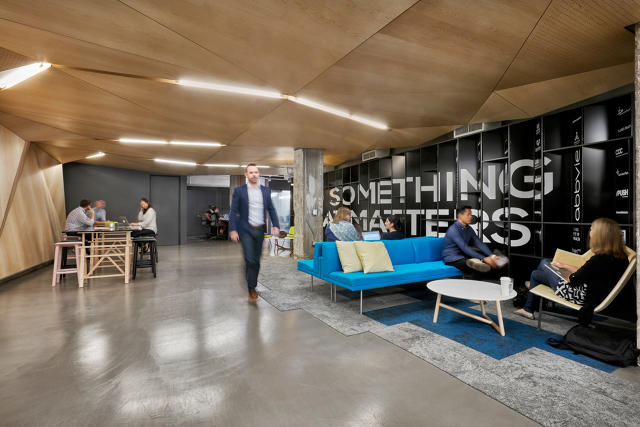
It Lacks Diverse Spaces
The survey found that the more innovative companies—as ranked by employees—emphasized individual and group work and were five times more likely than less innovative companies to have spaces that accommodate collaboration. “Collaboration is really critical for innovation,” Hoskins says. “How a space can expose you to people who aren’t in your direct team? It’s not just sitting at your desk [to work]. Diversity of space is a critical factor.”
Architecturally, this means creating areas that promote chance encounters, like communal areas for working or socializing. Infrastructurally, it means having ample Wi-Fi and electrical outlets throughout an office to let people go wherever they want.
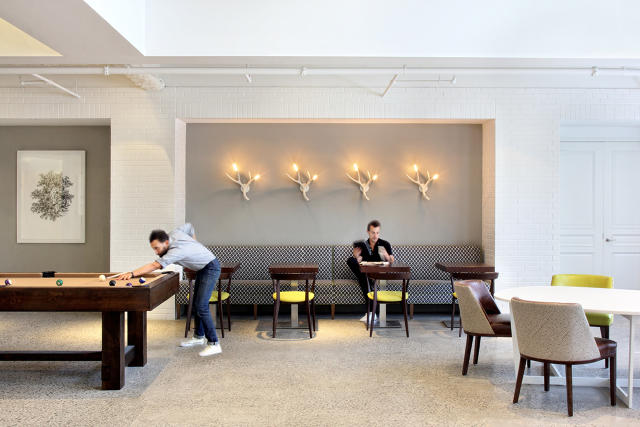
It Makes It Impossible To Focus
Collaborative work may be key to nurturing a creative, innovative company, but people still need to get things done on their own. On average, Gensler found that 30% to 40% of a person’s day involves solo work.
“There has to be a space where that individual can sit down, really crank things out, really focus, and not have a million distractions,” Hoskins says. “They have to have enough space to do what they need and the resources to do it.”
Workplace real estate is expensive, so private offices aren’t a realistic offering at many companies. The trick, then, is to keep noise to a minimum. (The perk employees want more than anything, as a recent Oxford study found, is quiet.) To that end, design strategies could include creating quiet zones and placing individual workstations in an open space far away from noisy communal areas.
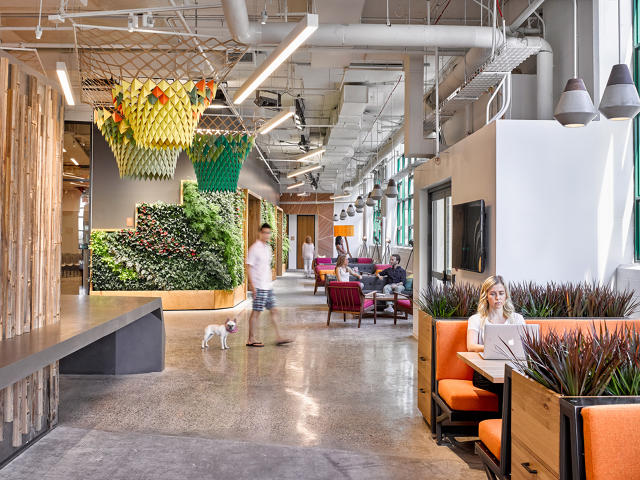
It’s Not Giving You Choices
The final key finding from the study centers around management giving employees the agency to work from wherever they feel like they can do the best job.
“The fourth leg of the table is really this idea of choice,” Hoskins says. “It’s the fact that people do different things during the day and they need to be empowered to choose the places where they’re going to accomplish what they need to accomplish.” She found that around one-half to two-thirds of employees surveyed didn’t have that flexibility. But in companies that were on the higher end of the innovation spectrum, everyone had that flexibility.
The solution? Letting people work in different spaces within the office—or outside of it.
“We talk about myths and realities in this world of what’s going on with space, and one of the things that was talked about when technology started to make us all mobile was, ‘We’re all going to work from home in our slippers,'” Hoskins says. “People want to be in the office, ideally for 71% of the time they’re working.” Though your employer isn’t likely to kit out your home office anytime soon, the next best thing is giving you the option to work from there.
While some of the survey’s findings read as common knowledge (of course you need distraction-free spaces to focus and don’t want to be confined in a dictatorial environment), Gensler hopes that it reinforces how spatial design can help build a stronger business. It’s not just about dropping in a staff cafe and foosball table, calling it “corporate culture,” and saying job well done.
“Productivity was so much part of the workplace, then it was all about the knowledge economy, and now we’re seeing innovation as a key driver of business and competitiveness,” Hoskins says. “Being able to clearly identify that the workplace is an important part of the mix. If you are an organization and you are competing in business today, you need to look at the workplace as part of your strategy to get there.”
[All Photos (unless otherwise noted): Garrett Rowland]
Gensler designed the offices for Matter, a healthcare incubator and co-working space in Chicago.

The architects created living room–like furniture vignettes to help spark conversation.
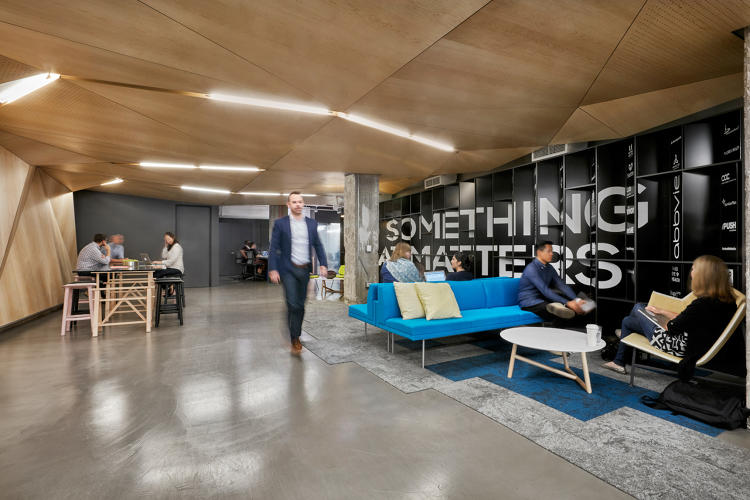
At McCann’s New York office, Gensler used a glass wall to divide individual workstations from a conference room.
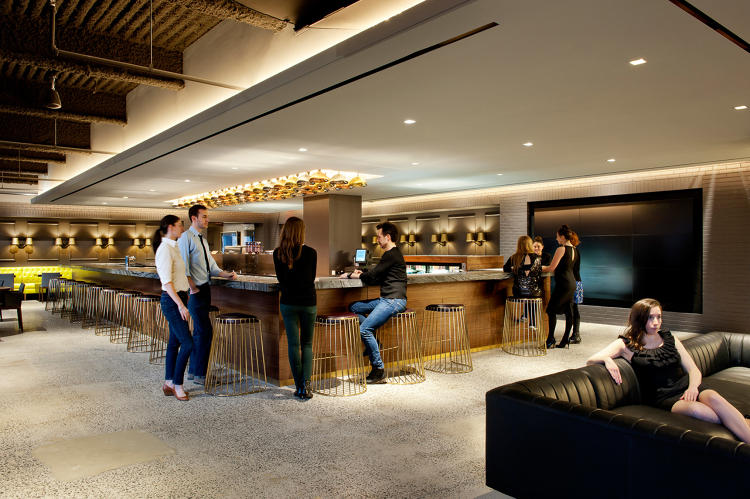
The design blocks out sound but offers visual continuity.
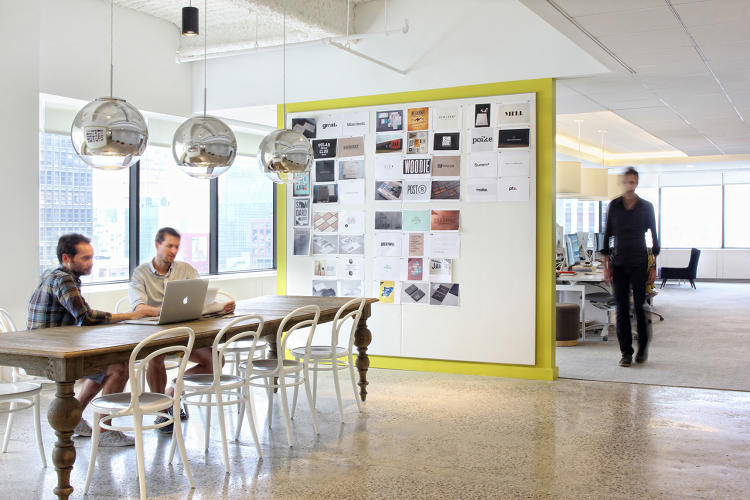
Gensler’s office design for the Johns Hopkins Incubator

Another shot of the Johns Hopkins Incubator
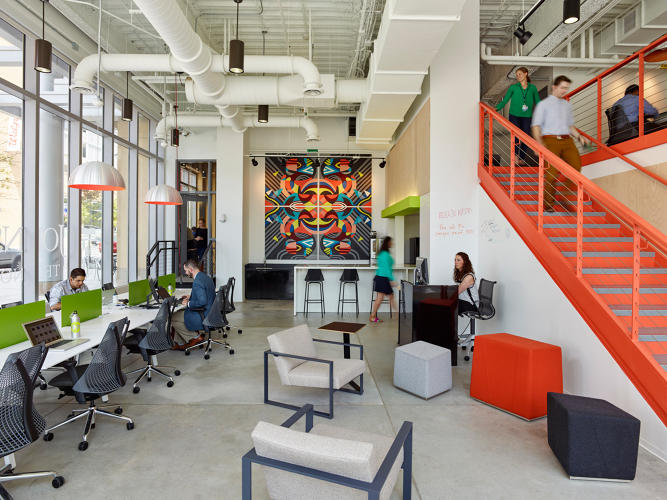
Johns Hopkins Incubator

Gensler also renovated the lobby of Marriott’s headquarters.

Another shot
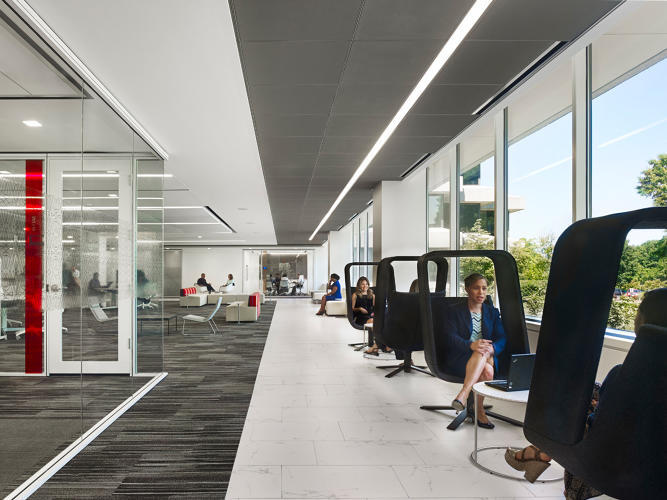
At the Washington Post, Gensler used environmental graphics of headlines and inspirational phrases to foster a sense of purpose among employees.

The Washington Post
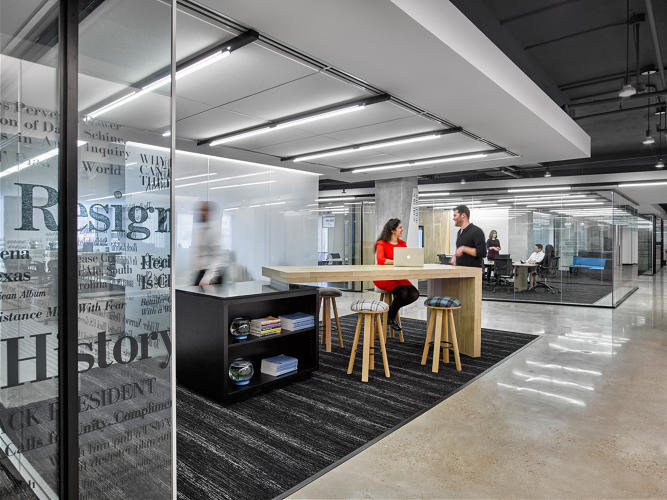
For Etsy’s headquarters, Gensler worked with the company to specify locally made products and furniture.
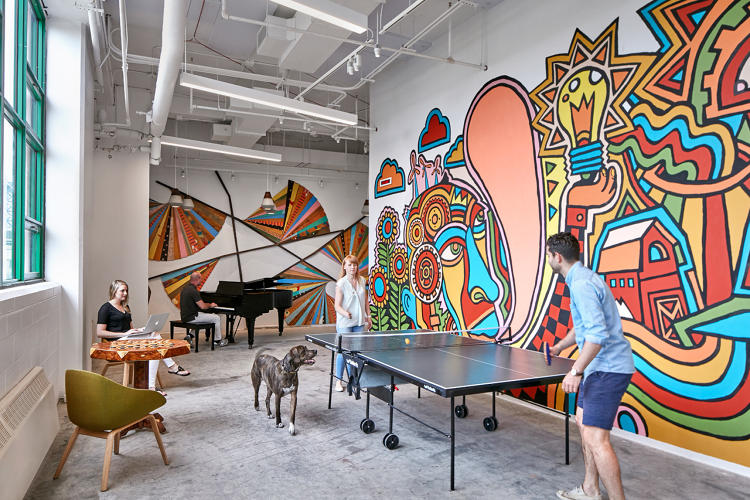
Etsy

Fast Company , Read Full Story
(57)